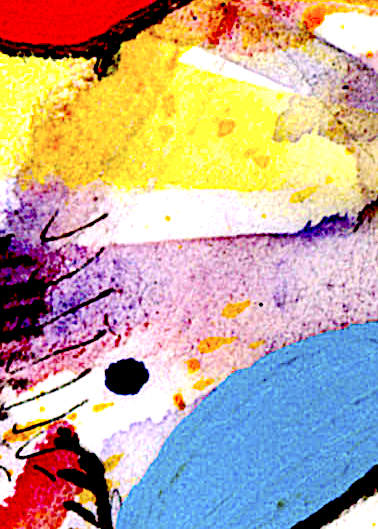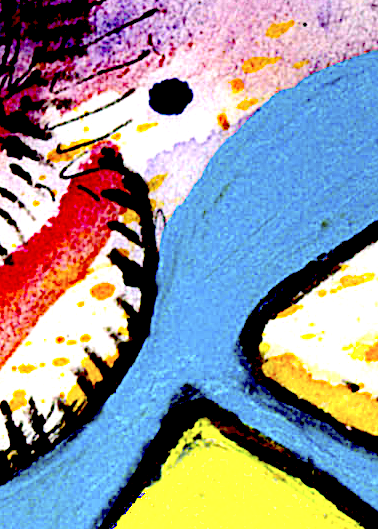IMPROTECH Paris - Αθηνα 2019
Detailed program
Thursday Sept. 26
Friday Sept. 27
Saturday Sept. 28
Sunday Sept. 29

Saturday sept 28 - Concert
Onassis STEGI, 20:00 - 22:30
Jaap Blonk, Hervé Sellin, Georges Bloch
Paris bout à bout
Cine-concert on Nurith Aviv's Bout à Bout movie. Voice, piano, OMax and DYCI2 computer systems.
Mark Bokowiec and Julie Wilson - Bokowiec
HEXIS
For Kinaesonics, Bodycoder System and soloist.
Marc Chemillier and Camel Zekri
Gnawa Machine
Augmented guitar, keyboard, dJazz and Le Cercle computer systems.
Orestis Karamanlis and Giorgos Gargalas
BitVox
For beatboxing and laptop live electronics
Steve Lehman and Jerôme Nika
Silver Lake Studies
Saxophones, live electronics, DYCI2 computer system

Jaap Blonk, Hervé Sellin, Georges Bloch
Paris bout à bout
Jaap Blonk, voice
Hervé Sellin, piano
Georges Bloch, voice, DYCI2 & Omax improvisation systems
Images by Nurith Aviv
Bout à Bout [End to End] is a series of sequence-shots filmed by Nurith Aviv in 1993, showing a poetic wander around Paris (in the subway, in particular). The film will be punctuated with still photographs shot by the artist from her window. This ensemble allows using live music and sound in a somehow similar way as for regular screenings with live music [ciné-concerts], but also as a source for real-time film-editing achieved by the improvising machines. Direct sound from the movie, Jaap Blonk’s sound poetry, Georges Bloch’s voice and Hervé Sellin’s piano mix with OMax and DYCI2 improvisation systems in an ambiguous hybridization.
Mark Bokowiec, Julie Wilson - Bokowiec
HEXIS (2019 World Premiere)
For soloist, Bodycoder System and multi-channel diffusion.
Mark Bokowiec, Composer/MSP/electronics
Julie Wilson-Bokowiec, Performer
Hexis is a Greek word that is important in the philosophy of Aristotle. It stems from a verb related to ‘possession’ and is typically translated in modern texts as referring to a ‘state’ of being. Sachs translates and refines the meaning as ‘active condition’ and argues that hexis refers to an active disposition that becomes a deeply embodied ‘state’ as opposed to a passive or surface action/interaction. For us hexis describes a way of being in performance. It is a deeply embodied active condition that operates at the core of an interactive phenomenology and fluid materiality that is central to our particular brand of improvisational kinaesonics. Our piece Hexis (2019) is thematically inspired by and draws upon Heraclitus’ older pre-Socratic river-analogy ‘one cannot step twice into the same river’ and for ‘as they step into the same rivers, different and (still) different waters flow upon them’. These ancient philosophical fragments (attributed to Heraclitus via Didymus & Plutarch) configure man’s state of being in relation to and as a part of a substance of nature. The river is an example of that which preserves structural identity while undergoing constant change of content, and it is this conflagration of unity/divergence, formation and dissolution, of the catching, touching and trickling away of substance that has informed the compositional architecture and underlying aesthetic principles of the piece. Hexis is the second work that seeks to explore the synergies between ancient motifs and our own distinct form of sonic mediation the first being PythiaDelphine:21 (2016) created with the kind support of Prof. Anastasia Georgaki and the National and Kapodistrian University of Athens and premiered at Animart in Delphi.
Camel Zekri and Marc Chemillier
Gnawa Machine
Camel Zekri, augmented guitar, Le Cercle computer system
Marc Chemillier, keyboard, dJazz computer system
This duet explores a dialogue between two machines. On one side, Marc Chemillier uses Djazz, a sofware belonging to the OMax family developed by IRCAM and EHESS (CAMS), that records on the fly the music played by a musician and improvises with it. Djazz specificity is to handle rhythm with various interfaces that allow agogical manipulation of the sequences generated by the computer. On the other side, Camel Zekri has developed his own electronic device in collaboration with the GRAME research center. It makes use of samples and is able to record them directly from an input signal. Thus the two software environments will respond one to the other creating an amazing "mise en abyme" of the machines. Some of the musical data injected into the process are taken from the Gnawa tradition which Camel Zekri belongs to.
Orestis Karamanlis and Giorgos Gargalas
BitVox
For beatboxing and laptop live electronics
Orestis Karamanlis, Laptop
Giorgos Gargalas, Beatboxing
BitVox is a work for beatboxer and live electronics running in the SuperCollider language. It makes use of audio event analysis and algorithmic beat manipulation in an effort to create a unified soundworld between the human beatboxer and his mechanical counterpart. It utilises a custom built SuperCollider class (the CuePlayer) allowing the organisation of processes and musical material in bundles and their execution in sequential cues.
Steve Lehman, Jérôme nika
Silver Lake Studies
Steve Lehman, saxophones, electronics
Jérôme Nika, DYCI2 computer systems
Silver Lake Studies is the first presentation of a research project that Steve Lehman and Jérôme Nika have been conducting together for more than a year. Centered around the DYCI2 program, this collaboration focuses on the integration of scenarios in music generation processes, and on the dialectic between reactivity and planning in interactive human-computer music improvisation. During their experiments, they explored the creation of generative processes that can adapt to constantly evolving metrics, the development of real-time spectral enrichments of saxophone improvisation, and "spectral chord changes" as the basis for melodic improvisations. In this work, the orchestral masses from the contemporary classical repertoire meet voices from experimental rap and hip-hop.
